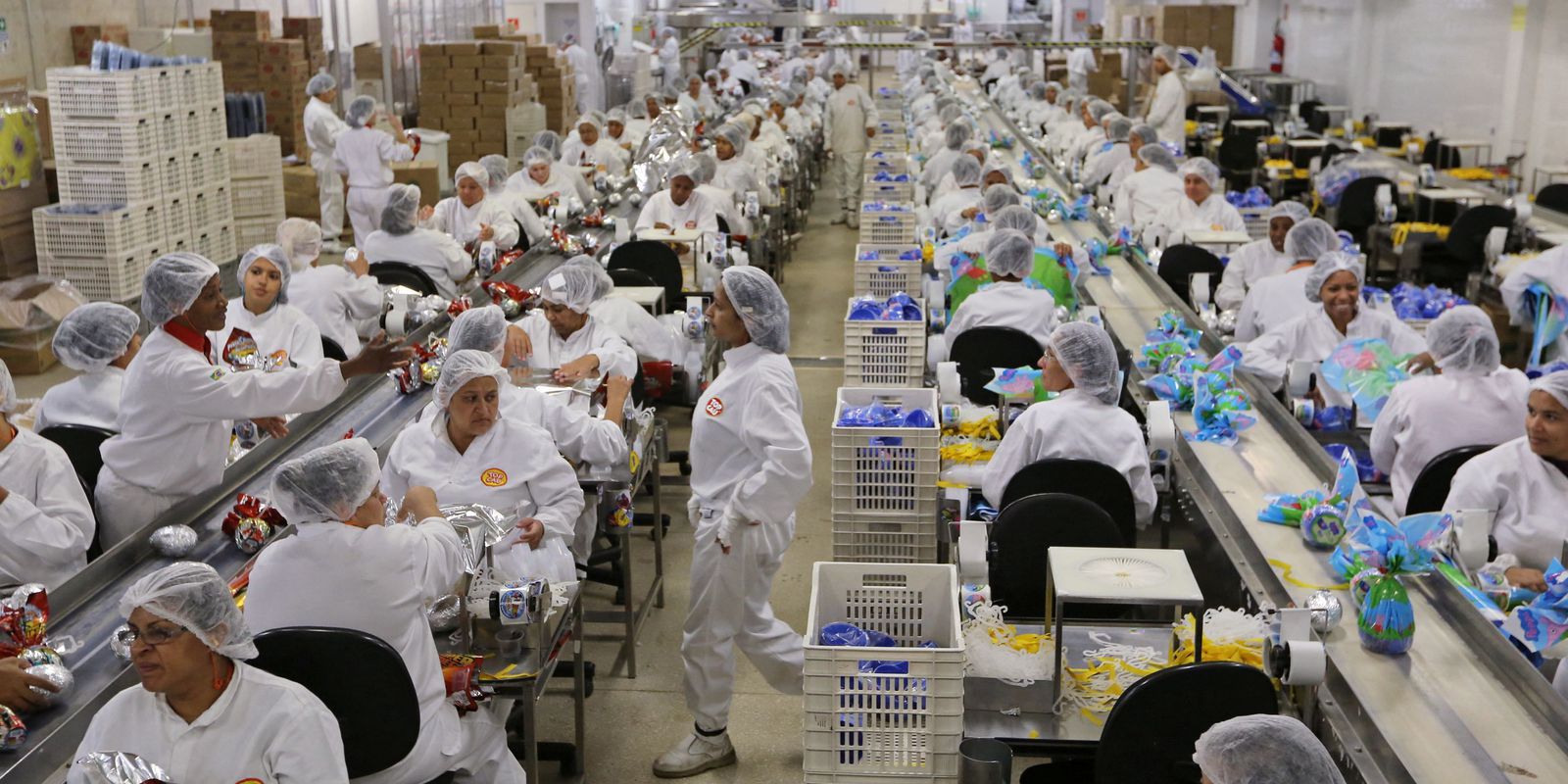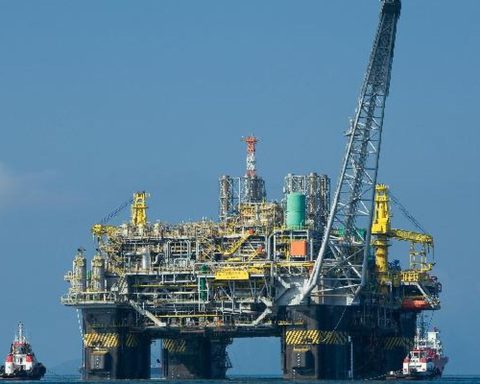Brazilian industrial production fell by 0.4% in June, after four consecutive months of positive figures. The last drop had been in January: 1.9%.
The sector accumulates a reduction of 2.2% in the first half and of 2.8% in 12 months. The data are part of the Monthly Industrial Survey (PIM), released today (2), in Rio de Janeiro, by the Brazilian Institute of Geography and Statistics (IBGE).
According to the study, including the June result, the sector is still 1.5% below the pre-pandemic level recorded in February 2020, and 18% below the record level in May 2011.
For the research manager, André Macedo, even with four months of growth in a row, a period in which there was an accumulated increase of 1.8%, the industry had not recovered the loss in January. With the result of June, there is an accentuation of the negative balance in the year (-0.5%) when compared to the level of December 2021.
“This reflects the difficulties that the industrial sector continues to face, such as the increase in production costs and the restriction of access to inputs and components for the production of final goods. In this sense, the behavior of industrial activity has been marked by stoppages of industrial plants, reductions in working hours and the granting of collective vacations,” he said.
For Macedo, the high interest rate and inflation that remains at high levels are among the factors that have negatively influenced the industry in terms of demand. In addition, there is also a decrease in family income and unemployment, despite the unemployment rate falling in recent months. The number of unemployed in the country is approximately 10 million.
“The characteristic of the jobs that are being created points to a precariousness of the job market and this is reflected in the mass of income, which is not growing. All these aspects are important facts and help to explain this negative balance of the industrial sector”, she noted.
Activities
The decline in June compared to May spread across most economic activities analyzed by the survey. The greatest influence was registered in the segment of pharmochemical and pharmaceutical products (-14.1%), which, in the two previous months, accumulated a high of 5.3%.
According to Macedo, this segment has higher rate volatility. “At the beginning of the year, there was a drop in the production of pharmochemical and pharmaceutical products and, in April and May, there was this increase. With the accumulated growth, the segment had a higher base of comparison, which justifies this double-digit retraction”, he said.
The coke, petroleum products and biofuels sector, which dropped 1.3%, was also an important impact on the June result. “In this activity, the items that most negatively impacted were alcohol and oil derivatives. But, even with the drop, this segment operates 4.5% above the pre-pandemic level, that is, it has a different behavior from the industry average”, he concluded.
The other contributions to the negative result of the sector were the activities of machines and equipment (-2%), metallurgy (-1.8%), computer equipment, electronic and optical products (-2.8%) and other transport (-5.5%).
In comparison with May, nine activities expanded. The highlights in the general result of the industry, in the positive field, were production of motor vehicles, trailers and bodies (6.1%) and mining and quarrying industries (1.9%).
“The vehicle sector accentuated the growth seen in May (3.8%), but this increase was not able to eliminate previous losses. The balance of this activity is still negative, as it is still 8.5% below the pre-pandemic level”, stressed Macedo.
He added that, in relation to extractive industries, the advance compensates for the loss of the previous month. “This growth was pressured by a higher pace in the extraction of iron ore. Before the May slump, the extractives sector had three months of positive rates, accumulating expansion of 6.5%,” he said.
Also increased in June were the segments of cellulose, paper and paper products (4.5%), manufacturing of apparel and accessories (7.1%), food products (0.6%) and perfumery, soaps, cleaning and personal hygiene (4.3%).
Among the four major economic categories, three retreated compared to May. The biggest drop came from the capital goods production sector (-1.5%), after increasing 7.5% in the previous month. For the second consecutive month, the sector of intermediate goods fell, now by 0.8%, accumulating a loss of 2.3%.
With a drop of 0.7%, semi and non-durable consumer goods interrupted two months of growth. In the period, they accumulated a high of 2.8%. The only increase in June came from the segment of durable consumer goods (6.4%), which intensified the expansion of the previous month (4.1%).
Comparison with June 2021
In relation to the same month of last year, the industrial sector had a retraction of 0.5% and presented negative results in 14 of the 26 branches investigated by the survey. The main negative influence on the result came from extractive industries (-5.4%) were pressured by the fall in the production of crude petroleum oils and iron ores. The activities of metallurgy (-8.3%) and pharmochemical and pharmaceutical products (-19.6%) also impacted the indicator.
The sectors of non-metallic mineral products (-6.9%), metal products (-6.0%), other chemical products (-2.6%) and electrical machines, appliances and materials (-6 .3%) also fell.
Other significant decreases were registered by the sectors of rubber products and plastic material (-3.4%), textile products (-8.3%), wood products (-8.4%), furniture (- 9.3%) and miscellaneous products (-8.3%) which negatively influenced the index.
Among the 12 activities that showed expansion in production and represented the main influences, appear the segments of coke, petroleum products and biofuels (8.6%) and automotive vehicles, trailers and bodies (5.9%).
The survey also pointed out that the greater production of diesel oil, fuel oils and naphtha for petrochemicals influenced the growth of the first sector. In the vehicle activity, the increase was related to the expansion in the production of automobiles and tractor trucks for trailers and semi-trailers.
Macedo also stated that, after the May result interrupted nine consecutive months of decline in this indicator, there is a return to the negative field. “In this comparison with the same period of the previous year, there is also the mark of the spread of falls among the investigated activities. But, despite the decline in June, the intensity of the fall has become less: in the first quarter of the year, there was an accumulated loss of 4.4% and, in the first half, the decline is 2.2%. This decrease in the magnitude of losses is also observed in all major economic categories,” he concluded.
Search
According to the IBGE, since the 1970s, the Monthly Industrial Survey (PIM Brasil) has produced short-term indicators relating to the behavior of the real product of extractive and manufacturing industries.
As of May 2014, the publication of the new series of monthly industrial production indices began, after a reformulation to update the sample of activities, products and informants, also seeking to develop a new weighting structure for the indices with based on the most recent industrial statistics.













